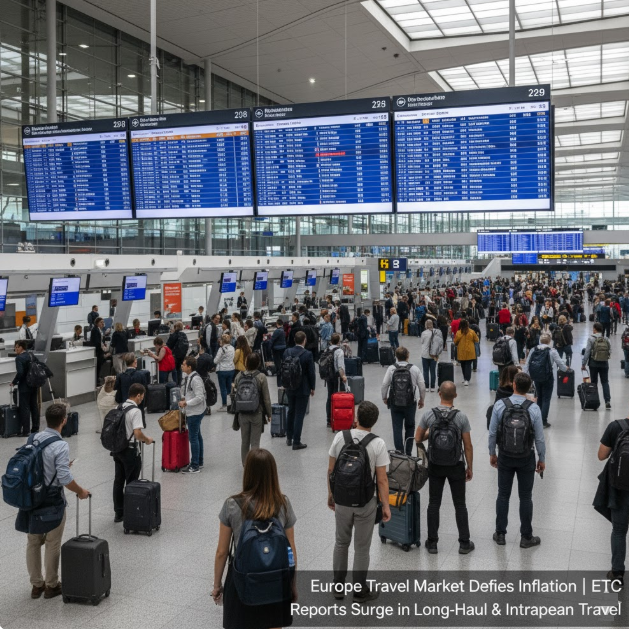The European travel market has demonstrated remarkable resilience in 2025, defying inflationary pressures and continuing to show strong demand for long-haul and intra-European trips, according to the latest data from the European Travel Commission (ETC). Despite higher prices due to inflation and increased travel costs, international arrivals to Europe have risen by approximately 3% year-on-year, with overnight stays growing by nearly 2.7%. Southern Mediterranean destinations such as Malta, Cyprus, Spain, and Portugal have seen notable increases in visitor numbers, while Northern Europe, including countries like Norway, Finland, and the Baltics, maintains strong appeal for travelers seeking cooler climates and nature-based experiences.
Travelers in Europe are adjusting their habits, with many opting to travel during off-peak times to avoid crowds and save money, aided by increased use of digital tools and artificial intelligence for smarter trip planning. The adoption of AI in travel planning has grown from 10% last year to 18% in 2025, particularly among Gen Z and Millennial travelers, demonstrating a shift toward more personalized and value-conscious travel. Central and Eastern European countries, benefiting from their cost competitiveness, continue to attract tourists looking for quality experiences at affordable prices. Meanwhile, travel from the United States to Europe is up 5% year-on-year, contributing to a continual rebound in transatlantic travel.
Looking ahead, Europe’s tourism outlook remains positive, with the ETC forecasting a 6.8% rise in international arrivals for 2026 driven by ongoing recovery in long-haul markets, especially in the Asia-Pacific region. Industry leaders highlight the importance of embracing year-round travel, longer stays, and sustainable tourism practices to ensure continued growth and shared benefits for communities across Europe. The travel market’s ability to adapt to economic challenges and evolving traveler preferences underscores Europe’s enduring global appeal as a premier destination.
Key Points:
- Europe’s international arrivals rose 3% year-on-year in 2025 despite inflation and higher travel costs.
- Southern Mediterranean and Northern European countries led growth, with Central/Eastern Europe gaining due to affordability.
- AI travel planning adoption nearly doubled to 18%, enhancing personalized and off-peak travel decisions.
- US traveler numbers to Europe increased 5%, supporting transatlantic recovery.
- ETC forecasts 6.8% growth in Europe arrivals for 2026, emphasizing sustainable, year-round tourism.















More Stories
IndiGo Chaos: 500+ Cancellations, Fares Skyrocket to ₹70,000 Amid Crew Shortage & Tech Glitches
United Kingdom Introduces New Nightly Tourist Tax A Budget Wake-Up Call for Family Holidays
Turkish Airlines and Marriott Hotels Crowned 2025’s Top Travel Brands by Global Traveler